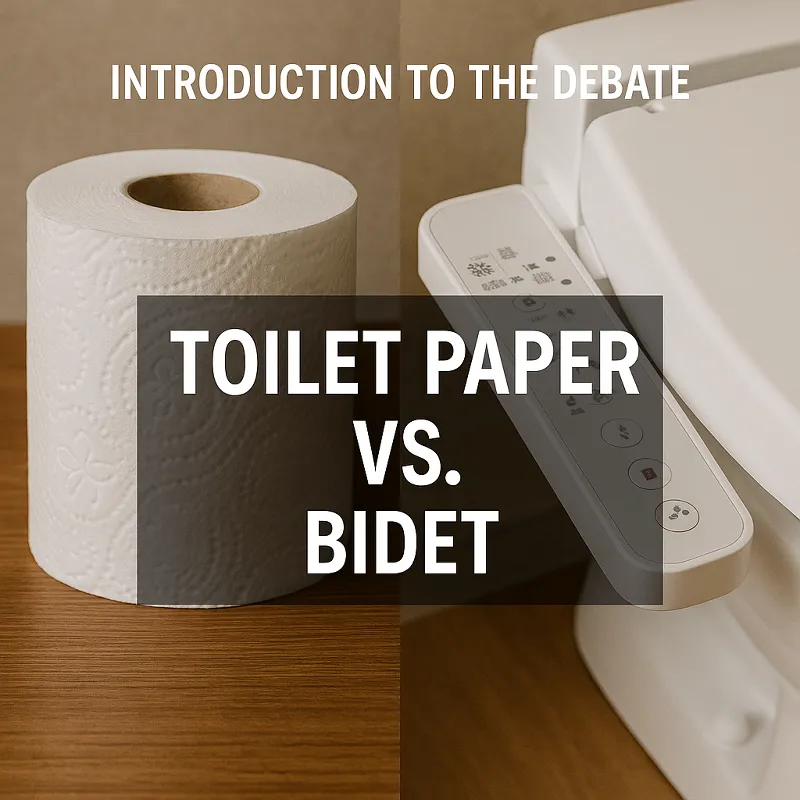
Introduction to the Debate
In the world of personal hygiene, a subtle yet impactful debate is underway: toilet paper versus bidet usage. This discussion isn’t just about personal preference or cultural norms; it also extends into the realms of environmental sustainability and energy consumption. As our global community becomes more conscious of ecological footprints, understanding the energy dynamics of toilet paper production compared to bidet water usage is crucial. This blog post aims to dissect the nuances of this debate, offering insights supported by research and practical examples.
How Smart Home Integrated Bidets Transform Elderly Living 👆Energy in Toilet Paper Production
Toilet paper production is an energy-intensive process that involves several stages, from pulping to packaging. The initial step, pulp production, is particularly energy-consuming. This process involves converting wood chips into pulp through mechanical or chemical means, both of which require significant amounts of energy. According to a study by the Environmental Paper Network, producing a single roll of toilet paper can use up to 37 gallons of water and approximately 1.3 kilowatt-hours of electricity. Moreover, the transportation of raw materials and finished products further contributes to the energy footprint.
Environmental Impact
The environmental impact of toilet paper production goes beyond energy consumption. The process often involves deforestation, which has significant implications for biodiversity and carbon sequestration. Furthermore, chemical processes used in pulping and bleaching can result in the release of pollutants, including dioxins, into water bodies. These environmental concerns have prompted many consumers to seek more sustainable alternatives, such as recycled toilet paper or bidets.
Bidet Options for Wheelchair Users 👆Bidet Water Usage
The bidet, a fixture used for cleansing after toilet use, presents an alternative that some argue is more environmentally friendly. The primary resource consumed in bidet usage is water. Estimates suggest that a typical bidet uses about 1/8 of a gallon per use, which is significantly less than the water used in toilet paper production. This makes bidets an attractive option for reducing water consumption in personal hygiene.
Energy Considerations
While bidets primarily use water, some models also require electricity to heat water and power features like air drying. However, the energy consumption for these functions is generally lower than the energy required for producing toilet paper. For instance, an electric bidet seat may use around 0.5 kilowatt-hours per day, depending on usage patterns. This energy usage is relatively modest when compared to the cumulative energy demands of toilet paper production and distribution.
Considerations for Bidet Installation in Bathroom Remodels 👆Cost Analysis: Toilet Paper vs. Bidet
From a cost perspective, the initial investment for a bidet can be higher than simply purchasing toilet paper. However, over time, the cost savings can be significant. A family of four, for example, might spend upwards of $100 annually on toilet paper. In contrast, the running cost of a bidet, considering water and electricity usage, is often much lower after the initial purchase and installation.
Long-term Savings
In the long term, bidets can offer substantial savings. The reduction in toilet paper usage not only decreases household expenditure but also lessens the frequency of purchasing, transporting, and disposing of toilet paper. Additionally, many users find that the improved hygiene provided by bidets can lead to fewer health-related expenses, such as treatments for irritation or infections caused by inadequate cleansing.
Design Trends for Bidets for Those with Mobility Challenges 👆Cultural and Social Factors
Cultural norms play a significant role in the choice between toilet paper and bidets. In many Western countries, toilet paper is the standard, while bidets are more common in parts of Europe, Asia, and the Middle East. Social factors, including privacy, convenience, and perceived cleanliness, influence these preferences. Understanding these cultural nuances is essential for making informed decisions about personal hygiene practices.
Adoption and Acceptance
The adoption of bidets in regions where toilet paper is predominant faces several challenges, including resistance to change and lack of awareness. However, increased environmental awareness and the growing availability of modern bidet designs, which are easy to install and use, are gradually shifting perceptions. Educational campaigns and endorsements by environmental organizations also play a pivotal role in increasing bidet acceptance.
Essential Bidet Features for the Elderly 👆Conclusion: Making an Informed Choice
Ultimately, the choice between toilet paper and bidets involves a balance of personal preference, environmental considerations, and cost implications. While toilet paper remains the more traditional option, bidets offer a compelling case for sustainability and long-term savings. By understanding the energy dynamics and environmental impacts of each option, consumers can make informed decisions that align with their values and lifestyle. As we move towards a more sustainable future, such informed choices become increasingly important.
Related Post: Considerations for Bidet Installation in Bathroom Remodels
Improvement in Vulvar Health by Using Bidet Instead of Toilet Paper 👆